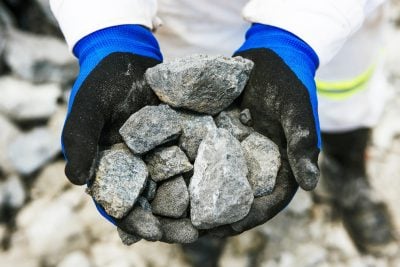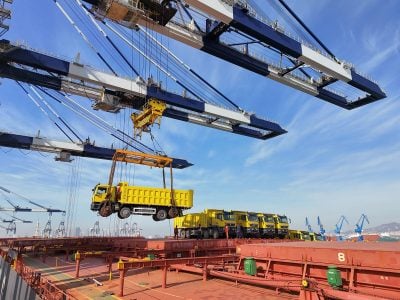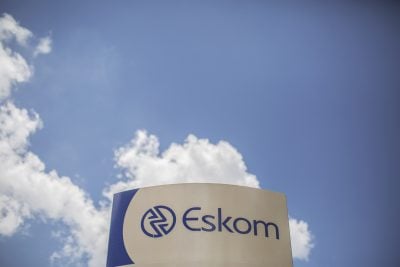With its huge reserves of mineral wealth, Katanga is the richest province in the DRC. However, years of turbulent politics and neglect of the mining industries had reduced the province’s economy to a shadow of its glory in the 1980s. But Katanga is now back and under the vigorous leadership of its governor, Moïse Katumbi Chapwe, is on the road to full recovery.
Gold, silver, diamonds, coltan, uranium, platinum, cobalt, cassiterite and copper galore – you can find practically any mineral in Katanga. Contributing more than half of the Democratic Republic of the Congo’s (DRC) GDP, Katanga province is the country’s economic heart. Thanks to its extremely rich subsoil and the intense mining operations resulting from it, the province also strategically borders three countries: Angola, Zambia and Tanzania.
Despite a land surface area approaching the same size as France, at nearly 500,000 sq km, the province is home to just 7m people. Thirty-five percent are clustered around the mining hub. Lubumbashi, the provincial capital with a population of only 2m people, is cosmopolitan with both French (the DRC’s official language) as well as English widely spoken. This is due to the presence of many expatriates working for Anglo-American and Asian companies, as well as English-speaking neighbouring countries.
Katanga’s often dramatic history has been shaped by the enormous quantities of minerals it contains. Belgium gained control of the Congo following the 19th century Scramble for Africa and set up the Union Minière du Haut-Katanga (UMHK) [Mining Union of Upper Katanga] to exploit the vast mineral resources of the province. By 1955, the company had become the largest producer of cobalt and third largest producer of copper in the world. Reflecting the importance of the province to the Belgian state, the province was given special status and its governors reported directly to Brussels rather than to the national capital Leopoldville (now Kinshasa). This designation was only dropped at independence on 30th June 1960, when the country gained its independence, and the name of the regional capital was later changed from Elisabethville to Lubumbashi.
Almost immediately after independence, Katangese leader Moïse Tshombe, encouraged by foreign powers, seceded from the Republic of Congo leading to a period of chaos, confusion and violence. The secession was brought to an end by UN forces in 1963 and by 1965, former army commander Mobutu Sese Seko had established a dictatorship over the entire country, now named The Republic of the Congo. This was changed to the Republic of Zaire in 1971 before reverting to the Democratic Republic of the Congo in 1997.
Reversing the slump
Despite possessing 10% of the world’s copper and 34% of its cobalt reserves, Katanga’s fortunes have ebbed and flowed over the years. In 1967, Union Minière was nationalised and one of the continent’s largest conglomerates, la Générale des carrières et des mines (Gécamines) was born. Over the boom period in the 1980s, the state monopoly employed nearly 30,000 people and posted yearly production figures of 450,000 tonnes. The sector’s contribution to GDP was around 13% in 1986.
But a combination of factors – declining international demand for copper, poor management, rampant corruption, nepotism and an abject failure to either maintain equipment or invest in the sector – saw a catastrophic fall in output in the 1990s when production crashed to a mere 33,946 tonnes (1995).
A prolonged period of stagnation and decay for both the mining industry as well as the country as a whole followed. In 2002, in a bid to inject some vigour into the sector, the industry was liberalised. The most productive mines were hived off to foreign interests at sometimes ridiculously low rates; what was left of Gecamines was a sad skeleton of its former self.
But Katanga is rising from the ashes as mining activities have restarted. The red warning flags are turning green and investors say their confidence in the region’s economic renaissance has been restored. International copper prices have generally been buoyant and despite limited flare-ups in isolated areas, the political climate, following the 2006 Presidential and legislative elections, has been the most stable for decades.
Katanga, the richest province in the country, is thriving thanks to the robust recovery of the mining sector and a vigorous campaign of social and economic reforms led by the charismatic and highly popular governor, Moïse Katumbi Chapwe. The 48-year-old entrepreneur, elected governor in 2007, has brought his considerable business skills to bear on his unique style of governance and the results have been impressive by any measure. His enthusiasm for football – he is the president of TP Mazembe, one of the most successful soccer clubs in Africa – and his ability to connect with the ordinary citizen marks him out as a leader of a rare stamp.
Mining revenues account for half the GDP of Katanga and are the source of most of the funding into the province’s multiplicity of projects. He has also seized the nettle and banned the export of raw minerals. Metals are now refined on site wherever processing capacity permits. The value addition is also creating a slew of jobs and associated industries.
Almost €9bn has been invested in the mining sector over the past few years. An investor-friendly approach has attracted around two dozen international business groups mostly from China, Canada and South Africa. Since 2009, exports have soared, boosted in particular by output from the giant Tenke Fungurume Mine. Cobalt exports have jumped from 26,168 tonnes in 2007 to 119,341 tonnes in 2012, according to the provincial government’s Department of Mines and Geology. The sector’s overall production is set to quadruple by 2015.
Diversification the goal
Copper output is also set for a spectacular leap. In November 2013, Katumbi said he expected output to increase by 20% on 2012 and hit a record 750,000 tonnes in 2013. The IMF has revised its growth forecasts for DRC for 2013 from 6.2% to 8.3%. Oscar Melhado, the IMF Resident Representative in the DRC, says, “the forecasts were revised upwards mainly because of higher than expected copper output. In the medium term, the DRC’s growth could hit double digits, driven by mining operations, trade, construction and agriculture.”
Governor Moïse Katumbi’s commitment to re-energising his province and turning it into a motor for the country’s growth has raised the operating budget from $113m in 2007 to $658m in 2013. Returns are reinvested, refurbishment and construction continues, new projects are commissioned and every sector is back in business.
The provincial government has partnered with the local private sector and is investing in infrastructure and amenities, road repairs, hydroelectric output, building homes, schools and hospitals. Nevertheless, while the DRC’s richest province is under full reconstruction, many challenges still remain. The major focus is on diversifying from a dependency on mining and the uncertainty over revenues that this implies. There is also a general feeling that mining has benefited multinational corporations far more than it has either the local population or the country. The drive to diversify has been part of the provincial government’s plans since 2007 with a view to starting a new era in Katanga’s development and preparing for a ‘post-mining’ future.
Two sectors have been given special priority: agriculture and tourism. With its favourable climatic conditions and fertile soil, Katanga has an excellent potential to vastly increase its agricultural output. The provincial Ministry of Agriculture’s current focus is on increasing the output of maize, the staple for the majority. Current maize production is only a third of the demand: the rest is imported from neighbouring countries.
Its varied landscape has ideal ingredients for a robust tourism sector. “In addition to Congo River, we have some of the highest waterfalls in the world, nature reserves, two national parks in Lupemba and Kundelungu, many plant and animal species, rare birds, etc.,” says Provincial Minister Thérèse Lukenge Kapwibwe.
Want to continue reading? Subscribe today.
You've read all your free articles for this month! Subscribe now to enjoy full access to our content.
Digital Monthly
£8.00 / month
Receive full unlimited access to our articles, opinions, podcasts and more.
Digital Yearly
£70.00 / year
Our best value offer - save £26 and gain access to all of our digital content for an entire year!
 Sign in with Google
Sign in with Google 


